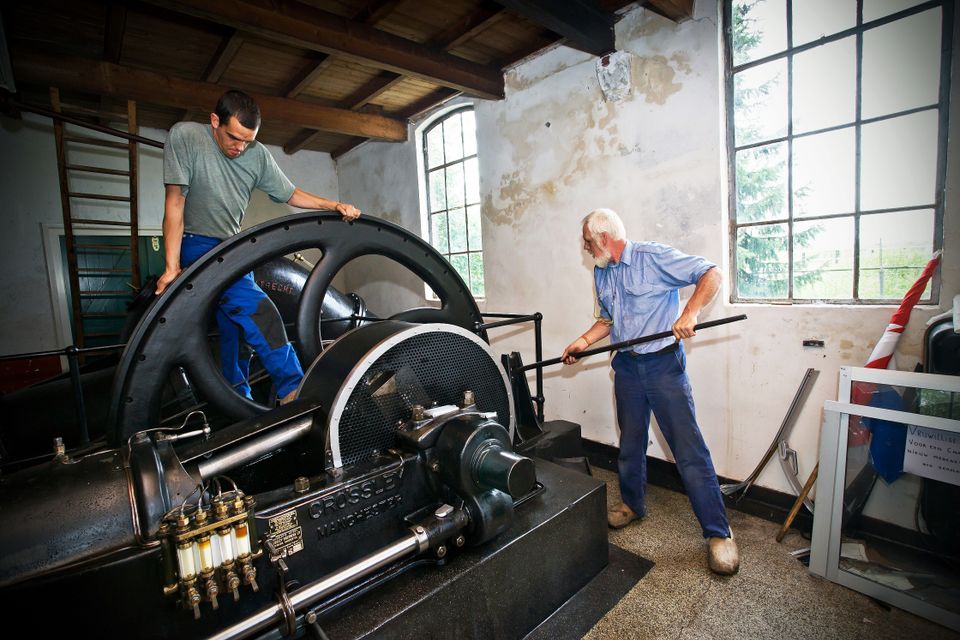
About the origins of the area – a flat and wild peat bog. After the area was reclaimed in the Middle Ages, drainage remained an important point of attention. The polders in Alblasserwaard and Vijfheerenlanden have a long and rich drainage history. At first, drainage was performed by windmills. In the 19th Century, the windmills were replaced by steam-powered pumping stations, which in turn made way for diesel pumping stations in the 20th Century. These days, the Rivierenland Water Board uses electric power stations.
To prevent the loss of many historic pumping stations, the …
About the origins of the area – a flat and wild peat bog. After the area was reclaimed in the Middle Ages, drainage remained an important point of attention. The polders in Alblasserwaard and Vijfheerenlanden have a long and rich drainage history. At first, drainage was performed by windmills. In the 19th Century, the windmills were replaced by steam-powered pumping stations, which in turn made way for diesel pumping stations in the 20th Century. These days, the Rivierenland Water Board uses electric power stations.
To prevent the loss of many historic pumping stations, the Regional Gemaling Foundation Alblasserwaard and Vijfheerenlanden was established in 2000. One of the historic pumping stations that falls under its tutelage is De Biezen diesel-powered pumping station. This pumping station was built in 1926 on the site of a hollow-post water windmill, which until 1921 drained De Biezen polder and the De Eng, Gouwenes and Mafit sections. The pumping station is powered by a Manchester Crossley crude-oil engine. These engines were used all over the world in the first half of the 20th Century. Since oil is not the same everywhere, the engine was built to be able to run on coconut oil, regular diesel and even thick fuel oil.
Further reading: Cope reclamation, Hagestein dam complex, Jan Blankenweg lock complex, Willow landscape and the Bolgarian forest, Former windmill.
